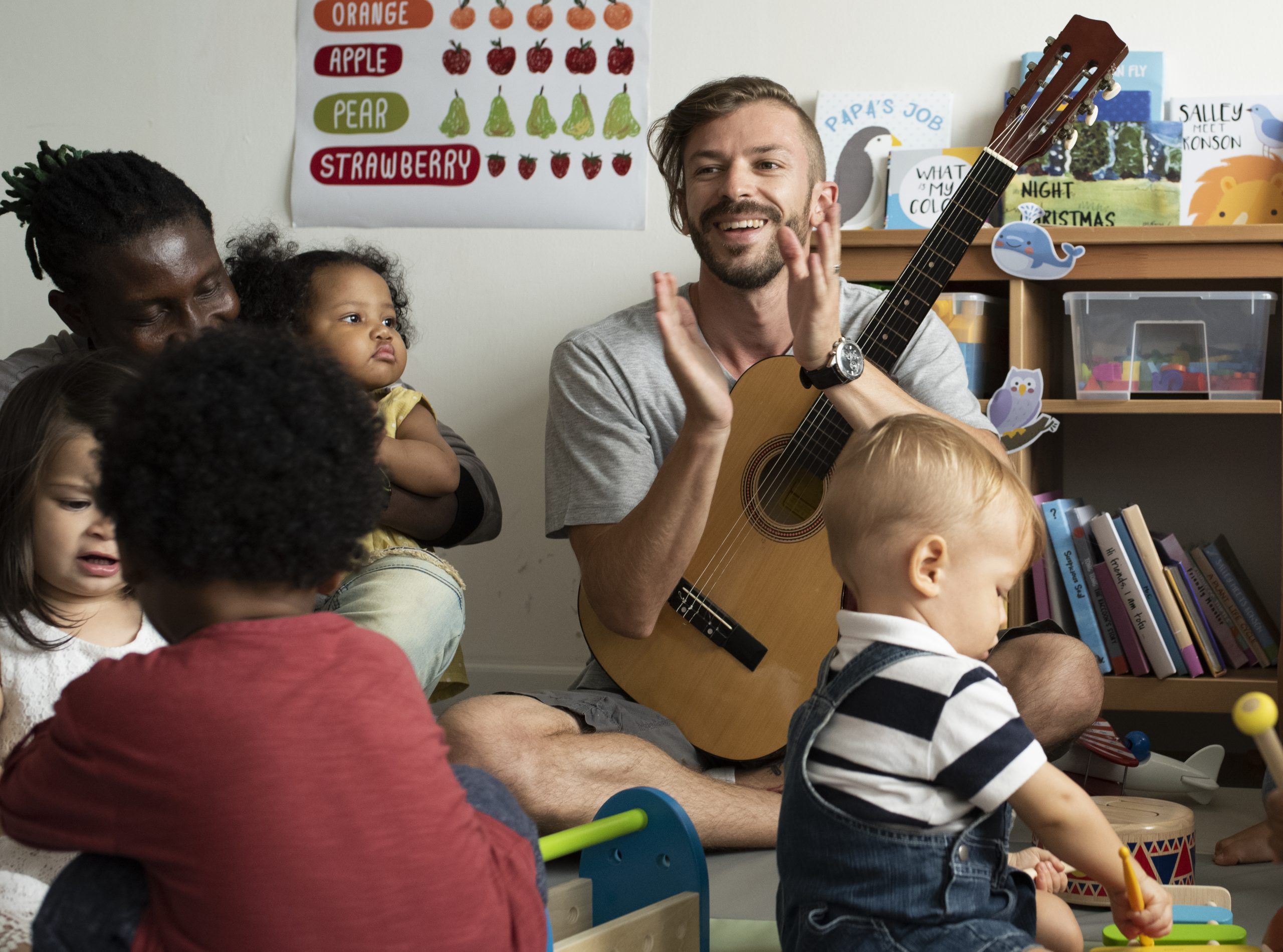
Mini Beats
Mini Beats is a game developed by Thijs Spook using the MDA-model. The game helps students to learn rhythmic notation. Both the learning goals of recognizing ánd notation of a rhythm are addressed in this little game. Mini Beats is deemed a little game, because in this scenario it purposely doesn’t involve the use of an epistemic frame.
In a traditional setting practicing rhythmic notation goes a bit like this: the teacher claps a rhythm, student writes it down. If we analyse this using the MDA-model it will look something like this (fig.1).

Depending on the difficulty of the rhythm, the aesthetics will most probably be frustration or confusion if it’s too hard, or maybe pride when they get it right, or boredom if it is (too) easy. These were at least the aesthetics that Thijs Spook observed, when he himself was studying at the conservatory, but in working with pupils at the age of 12 tot 15, the most common aesthetic he observed, was confusion; the youngsters weren’t only confused about the rhythm (because writing down a rhythm is hard for them), but foremost because they don’t see or feel the need to learn rhythmic notation. Why would they? What’s in it for them? So, to get them to a point where they either have answers to these questions, or where they don’t even ask these questions, different aesthetics are needed (fig.2).

In Mini Beats Thijs Spook designed a few mechanics to achieve this. First off, he made it easier by linking every rhythm that fits in a single beat to a fruit. Every child or teenager can clap the names of fruit or any other way of linking syllables to a rhythm. And so, a sense of competence is easily acquired. But at this point it’s still easy, and ‘childish’ would be one of the aesthetics if it stopped there. So to add a challenge, the points in the upper right corner of the game cards became the next mechanic that was used. Now, the harder the rhythm, the more points can be scored. Sidenote: points in this case are only a feedback system. If a (external) reward or a school grade is linked to the number of points, it’s a whole other mechanic.
The added challenge of linking scoring ability to the difficulty of the rhythm, takes away the childish feeling of fruit rhythms and adds to the motivation to get it right (in the aesthetics this is part of pride and feeling competent). So, the mechanics used, fruit rhythms and feedback in points, create students who listen, try and repeat the clapped rhythm, collaborating with classmates and are really trying to get it right.
When designing it like this, the students are working (playing) hard and refuse to give up until they get it right. Because some students are more quick to learn than others, the waiting on classmates can create boredom or a similar aesthetic. To fix this, Thijs added a ‘race-mechanic’: if the whole team is sure they got it right, everybody raises their hands. The first team to raise their hands gets a bonus point, but they cannot make any more changes. This creates a ‘higher temperature’ in the classroom. There’s more excitement and therefore everybody is trying to get it right, fast.
Mini Beats 1
Mini Beats 1 is a game aimed at recognizing and clapping basic rhythmic patterns. Each group of students (minimum 3, maximum 6) gets a card with an empty musical bar which holds space for 4 types of fruit and a box with fruit playing cards that can be attached to the musical bar. Initially, the players can earn points by correctly guessing the rhythm that is being played to them. Each piece of fruit guessed correctly, is worth points. The group that finishes first gets 1 bonus point. If this goes well, the students can come up with their own rhythms and practice. Then the roles are reversed, so teacher has to guess what it is being clapped or played, each correctly used rhythmic building block (fruit card) yielding points to the team. This game can then be used for a composing assignment, a piece to be played/studied or something else that the students can work with. That is all up to the teacher and the students themselves.
Mini Beats 2
Mini Beats 2 is the big brother of Mini Beats 1. In this more advanced version, students can again decide for themselves how to make a rhythmic composition and score points on speed, rhythm skills and creativity. A rhythmic composition is made on 3 levels. It focuses on practicing (1) rhythmic patterns, (2) the translation into musical notation and (3) composition of motif, variation, repetition and contrast. Throughout these levels the students can practice with building composing blocks, rhythmic patterns and structure and even a creative presentation. As they progress, the level of their rhythmic skills will evolve and in this way the students can work towards a clapping or stamp-like performance to celebrate their achievements.
Text, concept and visualisation: Thijs Spook





